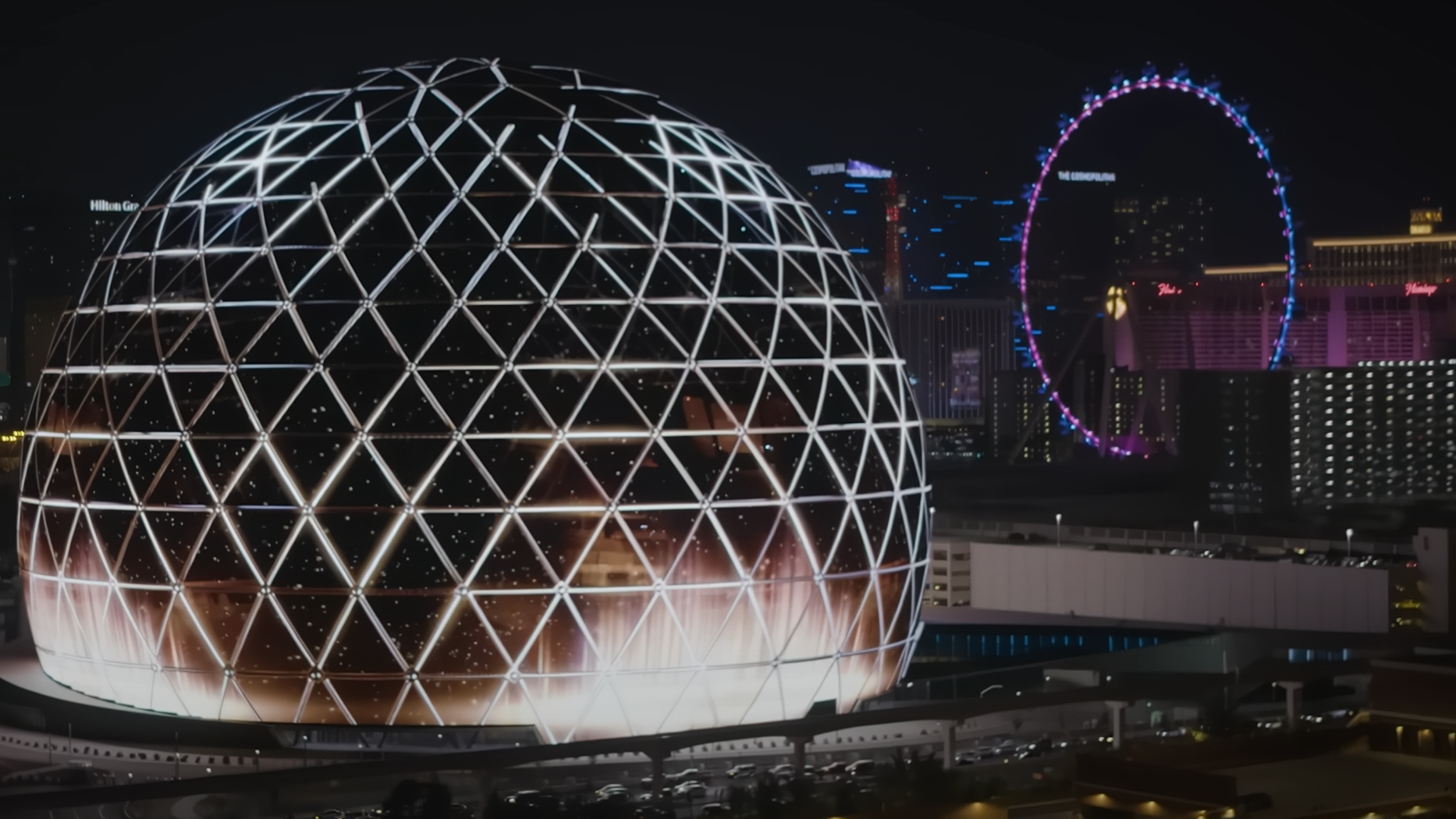
The Sphere in Las Vegas is one of the most iconic architectural feats of the last decade. It attracts awe for its revolutionary scale and display prowess and draws ire for its transformation into a Times Square-esque advertising beacon. Nvidia recently shared new insights into how its RTX graphics cards power the Sphere's interior and exterior, producing specs that make the eyes pop.
17 acres of screens
The Sphere's internal and exterior screens display at an impossible 16K resolution. For context, that is the same pixel density as four 4K displays in a 2x2 array, providing 16x the pixel density of a single 4K display as pixel density scales exponentially, not linearly. 16K resolution is an extremely rare resolution, with even 8K displays still a once-in-a-blue-moon sighting. However, that pixel density matters on an internal display that stretches 160,000 square feet and an external display wrapped around 580,000 square feet of Sphere.
What's newer is Nvidia's characterization of the display as being 16x16K. Nvidia's blog describes the interior screen as a three-layered display, likely meaning that three LEDs power each screen pixel. We've started to see this in consumer electronics, like LG's new Tandem OLED display or Apple's Tandem OLED display on the M4 iPad Pro. Layered displays like these (and it seems the Sphere) boost pixel brightness while majorly conserving power, a significant need for an almost four-acre screen. And the monster triple-layer 16K screen can do it all at a maximum of 60fps and a five millisecond or less latency.
While the commercialization of the Sphere's exterior serves to downplay its impressiveness in public minds, the 13 acres of spherical display are also a feat. 1.2 million programmable LED pucks, each featuring 48 individual diodes, work together to show anything from a Minions ad to a July 4th fireworks display to the Vegas skyline, pumping eye-watering amounts of light pollution into the already shiny valley.
Hardware, Nvidia and otherwise
150 Nvidia RTX A6000 graphics cards loaded into rack-mounted server computers fuel these vast displays. Hitachi Vantara, Hitachi’s data processing wing, provides infrastructure and software for these servers. Twenty-seven nodes across the Sphere contain 4 Petabytes (1 PB = 1000 TB) of flash memory capable of 400 GB/s transfer speeds, also pushing images into the screens.
Nvidia and Hitachi Vantara claim responsibility for the network connectivity of the Sphere’s display nodes, the facility, and the Sphere’s connection to Sphere Studios in Burbank, CA, where Sphere content is created. A mixture of Nvidia and Hitachi hardware and software was likely used to ensure the Sphere outputs images as one cohesive whole.
Sphere Studios in Burbank has its quarter-scale Sphere interior for testing purposes, where all Sphere content, from prestige films to U2 concert visuals, is crafted. The Studios are also powered by Nvidia, where a host of Nvidia A40 data center GPUs crunch the numbers on the Sphere’s imaging workflow and content creation.
To get crisp imagery fit for a 16K display, Sphere Studios worked with Deanan DaSilva, former CTO of Red Digital Cinema, to create the Big Sky camera system, a single camera shooting uncompressed 18K images at 120 fps with its 77.5mm x 75.6mm sensor and bespoke fisheye lens. The Big Sky camera fills up a 32TB storage card in 17 minutes at 60fps, necessitating further custom work to allow the camera system to reach 60 GB/s transfer speeds for offloading images to external storage solutions. Sphere’s head of capture, Andrew Shulkind, explained the need for such an insane camera rig: “4K is good enough for movies. With Sphere, good enough isn’t good enough anymore.”
The Sphere’s unmatched visual experience took years of development and billions of dollars of hardware to create an entirely new pipeline from creating content to displaying it, perhaps part of the reason why tickets for today’s 2:00 pm showing of Darren Aronofsky’s “Postcard from Earth” 50-minute film, shot on Big Sky, cost over $100 each. But perhaps the raw power and scale behind the Sphere’s visual majesty are impressive enough to warrant those prices; be sure to think of the Nvidia GPUs chugging away downstairs next time you catch a U2 concert in the Sphere.







